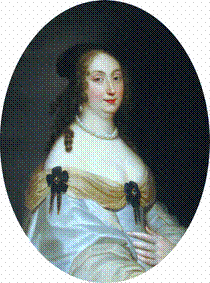|
|
||||||||||||||||||||||||||||||||||||||||||||||||||||||||||||||||||||||||||||||||||||||||||||||||
|
|
||||||||||||||||||||||||||||||||||||||||||||||||||||||||||||||||||||||||||||||||||||||||||||||||
|
1. John Casimir (25 Dec 1607-14 Jan 1608) 2. John Casimir (1609–1672), (reigned 1648-1668 as John Casimir II Vasa of Poland) 4. Charles Ferdinand (1613–1655) 5. Alexander Charles (1614–1634) 6. Anna Constance (26 Jan 1616-24 May 1616) 7. Anna Catherine Constance (1619–1651) |
Ancestry
Ancestors of Sigismund
III Vasa[show] [edit]Marriages
and descendants
Sigismund married twice. Firstly,
on (1540–1590)
and his wife Maria Anna of
Bavaria (1551-1608).
They had five children: 1.
Anna
Maria (23 May 1593–1600) 2.
Catherine
(9 May 1594–1594) 3. Vladislaus (1595–1648), (reigned 1632–1648 as Władysław IV Waza of
Poland) 4.
Catherine
(27 September 1596–1597) 5.
Christopher
(10 February 1598–1598) 1.
John
Casimir (25 December 1607 – 14 January 1608) 2. John Casimir (1609–1672), (reigned 1648–1668 as John Casimir II Vasa of Poland) 4.
Carles Ferdinand (1613–1655) 5.
Alexander Charles (1614–1634) |
||||||||||||||||||||||||||||||||||||||||||||||||||||||||||||||||||||||||||||||||||||||||||||||||
|
|||||||||||||||||||||||||||||||||||||||||||||||||||||||||||||||||||||||||||||||||||||||||||||||||
Marriages
|
|||||||||||||||||||||||||||||||||||||||||||||||||||||||||||||||||||||||||||||||||||||||||||||||||
|
|
|
||||||||||||||||||||||||||||||||||||||||||||||||||||||||||||||||||||||||||||||||||||||||||||||||


























